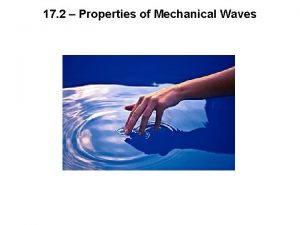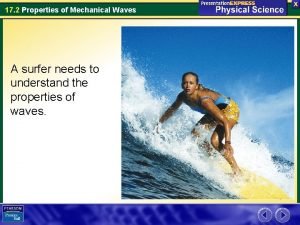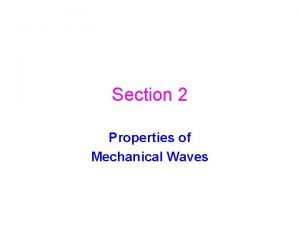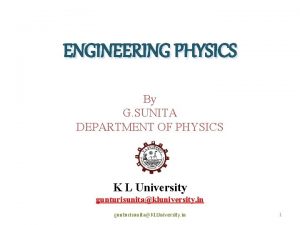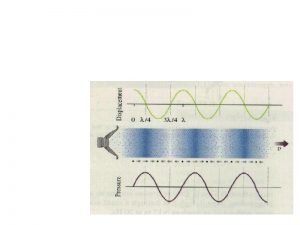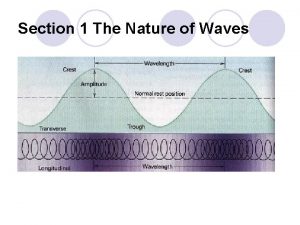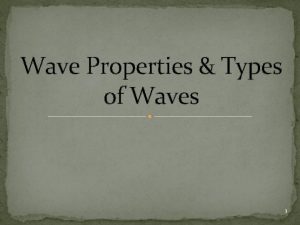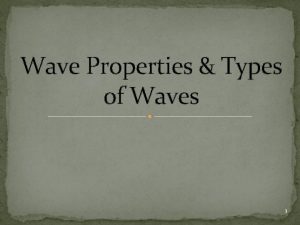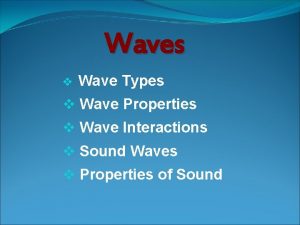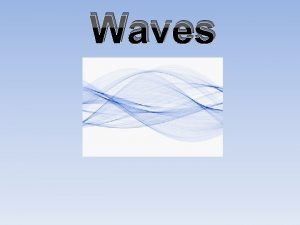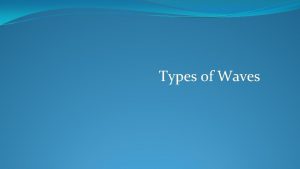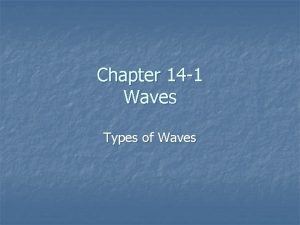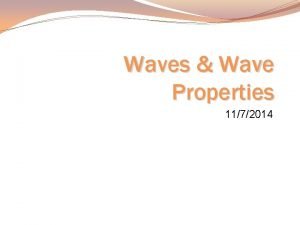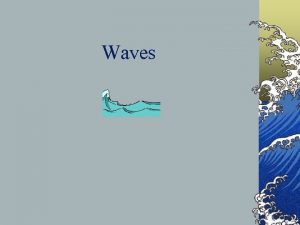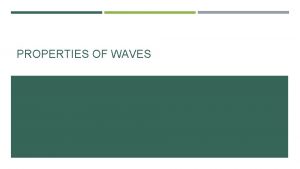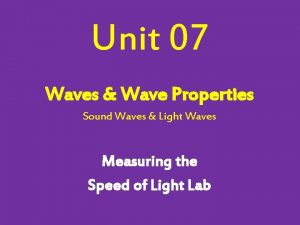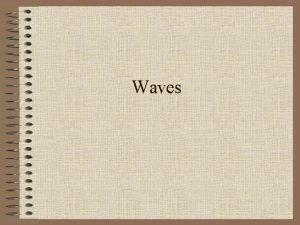Wave Properties Types of Waves 1 Wave Wave

























- Slides: 25

Wave Properties & Types of Waves 1

Wave • Wave - Rhythmic disturbance that carries energy through matter and space • ALL WAVES CARRY ENERGY! • Pulse – one wave that travels through a medium • Continuous waves – waves that repeatedly move up and down 2

Transverse Waves • Transverse waves – matter in the medium moves back and forth at right angles to the direction that the wave travels. 3

Parts of a Transverse Wave • Crest – top of a wave • Trough – bottom of a wave 4

Parts of a Transverse Wave • Amplitude – ½ the height of a wave • Relates to the amount of energy carried by the wave 5

Parts of a Transverse Wave 6

Parts of a Transverse Wave • Wavelength – the length of one cycle of a wave • Abbreviated by using the symbol, λ 7

Transverse Wave • Frequency – how many cycles (waves) are completed in a given time (usually 1 second) 8

Compression/ Longitudinal Waves • Compressional waves – matter in the medium moves in the same direction that the wave travels. Example: Sound waves 9

Parts of a compression wave Compression – the area where the particles are more dense 10

Parts of a compression wave Rarefaction – The less dense area of the wave 11

Parts of a compression wave Wavelength – One complete cycle of a wave 12

Surface Waves • both transverse & compressional; • examples: water waves, seismic waves 13

Medium • Most waves need something to travel on (or through) • The substance through which a wave travels is a medium 14

Standing Waves • Appear to be standing still • Standing waves are caused by two waves continuously interfering with each other. 15

Types of Waves… 16

Reflection • The angle at which a ray strikes a surface is equal to the angle at which it is reflected 17

Reflection 18

Reflection 19

Reflection 20

Reflection 21

Period and Frequency • Period (T) – time it takes for one wave to pass • The unit of a period is the second (s) • Frequency (f) – the number of waves that pass each second • The unit of frequency is Hertz (Hz) 22

Formula 1 • Frequency = 1/ period • f = 1/T 23

Formula 2 • Frequency = # waves / time • f = # waves / t 24

Formula 3 • Speed = frequency x wavelength • S = f x λ 25
 Mechanical waves examples
Mechanical waves examples Longitudinal wave vs transverse wave
Longitudinal wave vs transverse wave Example of a mechanical wave
Example of a mechanical wave Mechanical waves and electromagnetic waves similarities
Mechanical waves and electromagnetic waves similarities What type of waves are sound waves? *
What type of waves are sound waves? * Sound is a longitudinal wave
Sound is a longitudinal wave Long waves and short waves
Long waves and short waves Mechanical waves and electromagnetic waves similarities
Mechanical waves and electromagnetic waves similarities Mechanical vs electromagnetic waves
Mechanical vs electromagnetic waves Similarities of mechanical and electromagnetic waves
Similarities of mechanical and electromagnetic waves Seismic waves
Seismic waves Is a seismic wave mechanical or electromagnetic
Is a seismic wave mechanical or electromagnetic Compare and contrast p waves and s waves using venn diagram
Compare and contrast p waves and s waves using venn diagram Mechanical and electromagnetic waves
Mechanical and electromagnetic waves What are constructive waves
What are constructive waves Kesler science properties of waves answer key
Kesler science properties of waves answer key What are the 4 basic properties of waves
What are the 4 basic properties of waves Detail the measurable properties for all waves.
Detail the measurable properties for all waves. Property of mechanical waves
Property of mechanical waves Properties of mechanical waves
Properties of mechanical waves Properties of mechanical waves
Properties of mechanical waves One of the disadvantage of magnetostriction oscillator is
One of the disadvantage of magnetostriction oscillator is 4 basic properties of waves
4 basic properties of waves Ability of two or more waves to combine and form a new wave
Ability of two or more waves to combine and form a new wave Difference between intensive and extensive properties
Difference between intensive and extensive properties Physical properties and chemical properties
Physical properties and chemical properties


















